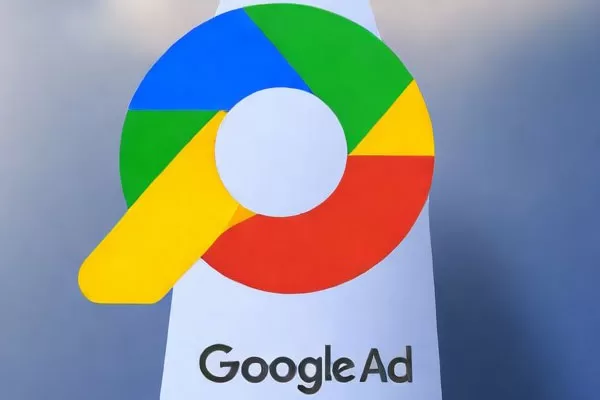At Webdesign for Business we run Google Ads Campaigns for our customers. We run geographically targeted campaigns for example for businesses in our region targeting Maryborough, Hervey Bay, Bundaberg, Childers – or Australia wide. Google Ad campaigns can be post code targeted.
We believe part of the success of a business website today is a google ads campaign both bringing direct traffic and sales conversions to your website and togther with other Search Engine Optimisation efforts supporting generic traffic growth to your website over time.
You can of course run and manage your own google ads campaign or ask us at Webdesign for Business to plan, run and fine tune your google ad campaign to optimise your online advertising expenditure.
Google Ads emerges as a powerful tool for businesses seeking to reach their target audience, generate leads, and maximize their return on investment (ROI). However, running effective Google Ads campaigns requires more than just setting up a few ads and targeting keywords. It demands a strategic approach, meticulous planning, and continuous optimization to ensure optimal performance and sustainable success. In this comprehensive guide, we delve into the key components and best practices for running effective Google Ads campaigns that deliver tangible results.
- Set Clear Goals and Objectives: Before diving into the intricacies of campaign setup and optimization, it’s crucial to define clear and measurable goals for your Google Ads campaigns. Whether it’s increasing website traffic, generating leads, driving sales, or boosting brand awareness, clearly articulating your objectives will serve as a roadmap for your campaign strategy. Additionally, establish key performance indicators (KPIs) to track progress and evaluate the success of your campaigns.
- Thorough Keyword Research: Keywords form the foundation of Google Ads campaigns, determining when and where your ads will appear. Conduct comprehensive keyword research to identify relevant search terms that align with your business offerings and target audience’s search intent. Utilize keyword research tools, analyze search volume and competition, and explore long-tail keywords to uncover valuable opportunities for targeting.
- Create Compelling Ad Copy: Crafting persuasive ad copy is essential for capturing the attention of potential customers and enticing them to click on your ads. Develop concise and compelling headlines that highlight the unique selling propositions (USPs) of your products or services. Additionally, utilize ad extensions such as sitelinks, callouts, and structured snippets to provide additional information and enhance ad visibility.
- Leverage Audience Targeting: Google Ads offers a variety of audience targeting options to reach users based on demographics, interests, behavior, and more. Utilize audience insights and segmentation to tailor your ad messaging and targeting to specific audience segments. Experiment with remarketing campaigns to re-engage users who have previously interacted with your website or expressed interest in your offerings.
- Optimize Landing Pages: A well-designed and optimized landing page is critical for maximizing the effectiveness of your Google Ads campaigns. Ensure that your landing pages are relevant to the ad content, provide a seamless user experience, and feature clear calls-to-action (CTAs) that guide visitors towards conversion. Conduct A/B testing to experiment with different layouts, messaging, and elements to identify the most effective variations.
- Monitor and Analyze Performance: Continuous monitoring and analysis of campaign performance are essential for identifying areas of improvement and optimizing for better results. Utilize Google Ads’ built-in analytics tools to track key metrics such as click-through rate (CTR), conversion rate, cost-per-acquisition (CPA), and return on ad spend (ROAS). Identify underperforming keywords, ad creatives, and targeting options, and make data-driven adjustments to optimize campaign performance.
- Budget Management and Bid Strategy: Effective budget management is crucial for maximizing the impact of your Google Ads campaigns while ensuring optimal allocation of resources. Set realistic budget constraints based on your advertising goals and monitor spending closely to avoid overspending. Experiment with different bidding strategies, such as manual CPC, automated bidding, or target CPA, to find the most cost-effective approach for achieving your objectives.
- Continuous Testing and Optimization: The landscape of digital advertising is constantly evolving, requiring businesses to adapt and innovate to stay ahead of the competition. Implement a culture of continuous testing and optimization, where you regularly experiment with different ad variations, targeting options, and campaign settings to uncover insights and improve performance. Stay informed about industry trends, algorithm updates, and best practices to ensure your Google Ads campaigns remain effective and competitive.
In conclusion, running effective Google Ads campaigns requires a strategic approach, attention to detail, and a commitment to continuous improvement. By setting clear goals, conducting thorough research, creating compelling ad content, and leveraging audience targeting and analytics, businesses can maximize the impact of their advertising efforts and achieve measurable results. With careful planning, diligent execution, and ongoing optimization, Google Ads can serve as a powerful tool for driving growth, expanding reach, and achieving business objectives in today’s digital landscape.
